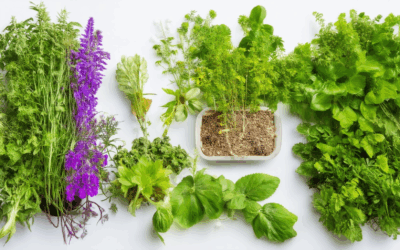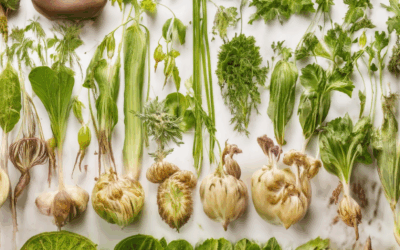Are you ready to master the art of seasonal planting? Whether you’re a seasoned gardener or just starting out, understanding the perfect timing for planting can make all the difference in your garden’s success. This comprehensive guide will walk you through everything you need to know about seasonal planting, ensuring your plants thrive throughout the year. From selecting the right vegetables for each season to utilizing planting calendars tailored to your zip code, we’ve got you covered. Discover the secrets to growing a bountiful garden with our expert tips on companion planting, tree planting jobs, and much more. Let’s dive into the world of seasonal planting and unlock the key to a vibrant, productive garden year-round!
What Vegetables to Plant in What Month?
The best vegetables to plant depend on the growing season and climate conditions. Here’s a guide to planting vegetables throughout the year:
- January : Start seeds indoors for vegetables like carrots , radishes , and spinach . Hardy greens such as kale and collards can be planted outside in cooler regions.
- February : Plant cool-season crops like spinach , kale , and peas . Root vegetables such as beets and turnips can be transplanted outdoors.
- March : Plant warm-season crops like tomatoes , cucumbers , and peppers . Spring bulbs and root vegetables like potatoes and onions can be planted.
- April : Transplant vegetables like tomatoes , peppers , and eggplants . Plant corn , beans , and squash in warmer climates.
- May : Sow corn , beans , and peas . Harvest cool-season vegetables like lettuce and kale .
- June : Plant summer vegetables such as squash , cucumbers , and zucchini . Continue planting warm-season crops.
- July : Harvest vegetables like tomatoes , cucumbers , and peppers . Plant hot peppers and eggplants in hotter regions.
- August : Enjoy the harvest of tomatoes , cucumbers , and peppers . Plant fall crops like Brussels sprouts , carrots , and spinach .
- September : Plant Brussels sprouts , cauliflower , and swiss chard . Harvest root vegetables like potatoes and onions .
- October : Plant cold-hardy vegetables like kale , collards , and spinach . Protect plants from frost in colder zones.
- November : Harvest remaining vegetables and prepare garden beds for winter. Plant root vegetables like carrots and beets in mild climates.
- December : Plant hardy greens like collards and kale . Prepare soil for next year’s planting by composting and mulching.
General Planting Tips
- Choose the right seeds or young plants based on your climate zone.
- Plan your garden layout to maximize space and sunlight.
- Prepare soil with organic matter for better growth and nutrient retention.
- Water regularly, especially during dry periods.
- Consider companion planting to deter pests and improve yield.
For more detailed gardening tips and resources, visit OldSeed.org .
Vegetables That Can and Cannot Be Plotted Together
Planting vegetables requires careful consideration of their growth habits, root systems, and potential chemical interactions. Here’s a guide to which vegetables can coexist harmoniously and which should be separated:
Vegetables That Can Be Plotted Together
- Leafy Greens (Lettuce, Spinach): These can be planted near taller crops for shade during hot weather.
- Basil and Tomatoes: Basil complements tomatoes well and acts as a deterrent against pests.
- Pole Beans and Other Legumes: These plants fix nitrogen in the soil, beneficial for adjacent crops like corn and squash.
- Cucumbers and Squash: Both thrive in similar conditions and can be grown together without issues.
- Peppers and Tomatoes: These can coexist, though spacing is crucial to prevent overcrowding.
Vegetables That Should Not Be Plotted Together
- Onions, Garlic, Leeks, Shallots, and Pole Beans/Peas: Onions and garlic are sensitive to pests and require specific care, while pole beans deplete soil nutrients.
- Carrots and Beets: These root vegetables may compete for sunlight, affecting their growth.
- Dill and Cucumbers: Dill attracts aphids, which can harm cucumber plants.
- Potatoes and Tomatoes: Both belong to the Solanaceae family and can negatively impact each other’s health.
- Radishes and Certain Herbs (Parsley, Cilantro): Radishes dislike strong odors from these herbs.
- Broccoli and Cabbage: Both are cruciferous vegetables and may share similar growth requirements.
Additional Considerations
- Seasonality: Plant cool-season crops like spinach and kale in spring and fall, avoiding placement near summer crops.
- Spacing: Ensure adequate space between plants to prevent overcrowding and disease spread.
By understanding these relationships and planning accordingly, gardeners can maximize their vegetable patch’s productivity and minimize conflicts.
In What Order Should I Plant My Vegetable Garden?
To optimize your vegetable garden’s productivity and health, follow this organized planting order:
- Assess Soil Conditions : Begin by testing your soil’s pH level. Different plants thrive in various pH ranges. Use a garden center kit to determine acidity or alkalinity and adjust accordingly with lime or sulfur.
- Plan Layout and Succession Planting : Designate areas for tall, medium, and short plants to maximize sunlight and airflow. Consider companion planting to deter pests and enhance yields. Examples include marigolds for pest control.
- Timing Seeds vs. Transplants :
- Cool-Weather Crops : Plant seeds now for crops like lettuce, spinach, and radishes, which prefer cooler conditions.
- Warm-Season Crops : Transplant tomatoes, peppers, and eggplants early, as they require warmer temperatures.
- Watering Strategy : Set up a sprinkler system and water deeply but less frequently. Use mulch to conserve moisture and suppress weeds.
- Fertilization Schedule : Apply fertilizer at planting time and during the growing season based on soil test results. Look for a chart tailored to your soil type.
- Integrated Pest Management : Implement techniques like crop rotation, companion planting, and biological controls (e.g., ladybugs) to minimize pest damage.
- Weed Control : Combine pre-emergent herbicides with manual removal and mulching to manage weeds effectively.
- Pruning : Regularly prune plants to remove dead wood and improve airflow, particularly for trees and shrubs.
- Harvest Planning : Note the harvest times for each plant to ensure timely collection and prevent overripening.
- Succession Planting for Extended Season : Replace finished plants with cool-weather crops in fall to extend the gardening season.
By following this structured approach, you can create a thriving vegetable garden tailored to your region and growing habits.
Best Seasons for Planting
The optimal planting seasons vary based on regional climate, plant types, and specific growing requirements. Here’s a structured overview:
Spring Planting
- When: Typically occurs after the last frost, varying by region and plant type.
- Why: Warmer temperatures promote germination and initial growth. Soil becomes workable, allowing for proper root establishment.
- Considerations: Frost can damage tender plants, so timing is crucial. Cool-season crops like lettuce and spinach are ideal for late winter or early spring.
Summer Planting
- When: Mid-spring onwards, ensuring sufficient warmth for many plants.
- Why: Warmth aids in flowering and fruit production for summer crops like tomatoes and peppers.
- Considerations: Extreme heat can stress plants, requiring adequate watering and care.
Fall Planting
- When: Late summer to early fall, allowing plants to establish before winter.
- Why: Cooler temperatures reduce stress, enabling sustained growth. Many perennials and cool-season crops thrive in this period.
- Considerations: Fall planting benefits from natural moisture, reducing watering needs.
Winter Planting
- When: In mild climates, late winter is suitable for cold-tolerant plants.
- Why: Provides time for root development and early growth before spring.
- Considerations: Requires knowing which plants thrive in colder conditions.
Key Considerations
- Soil Preparation: Test pH levels and enrich with compost for optimal growth.
- Climate Zones: Adjust planting schedules according to USDA hardiness zones.
- Growing Seasons: Longer growing periods allow for more robust plant development.
For detailed guidance, consult local gardening resources or agricultural extensions, which provide region-specific advice tailored to your planting needs.
Which Plant Is Best for All Seasons?
When selecting plants that thrive throughout every season, it’s important to consider their adaptability, beauty, and functionality. Here are some top recommendations:
- Evergreen Herbs: These plants maintain their foliage year-round, making them ideal for continuous beauty. Herbs like Lavender and Rosemary not only look good but also serve practical purposes in the garden and kitchen.
- Seasonal Flowers: Perennial flowers like Daylilies and Coneflowers provide vibrant color during spring, summer, and fall. Their hardy nature ensures they return each year.
- Trees and Shrubs: Dwarf fruit trees, such as Apple Trees , add structural interest and seasonal fruit production. Evergreen shrubs like Boxwood remain lush all year round.
For more tips on choosing plants that suit every season, explore our gardening resources and discover how to create a sustainable garden with heirloom seeds .
What is Best to Plant Right Now?
With the current date being April 9, 2025, the optimal time to plant various fruits, vegetables, and herbs is upon us. Here’s a curated selection of plants that are ideal for this season:
- Fruits: – Strawberries : Perfect for cooler climates, they can be planted now and will bear fruit by June. – Blueberries : Though they take a couple of years to mature, they are worth the wait and can be planted now. – Raspberries : Varieties like black and red raspberries can be harvested in July.
- Vegetables: – Cabbage and Broccoli : Cool-season crops that thrive in April and are ready to harvest by early summer. – Carrots and Beets : Ideal for cooler weather, they can be sown directly and harvested in fall. – Spinach : A quick-grower that can be harvested in about 50 days.
- Herbs: – Basil : Grows rapidly and can be harvested multiple times throughout the season. – Cilantro : Adds fresh flavor to dishes and can be grown alongside other herbs. – Dill : Valuable for cooking and can be integrated into a diverse herb garden. – Chives : Versatile and useful fresh or dried.
Care Tips:
- Ensure adequate sunlight, consistent watering, and proper soil preparation for each plant.
- Consider companion planting, such as strawberries with beans, to enhance growth and deter pests.
Conclusion:
Planting now offers a variety of options to enjoy fresh produce and herbs later this year. Whether you’re a seasoned gardener or just starting out, these choices provide a rewarding experience. Get started today and enjoy the fruits of your labor come harvest time!








0 Comments